Equilateral Triangle Puzzle
This blog post contains Amazon affiliate links. As an Amazon Associate, I earn a small commission from qualifying purchases.
Can you build an equilateral triangle puzzle using the given pieces without letting any pieces of the same color touch?
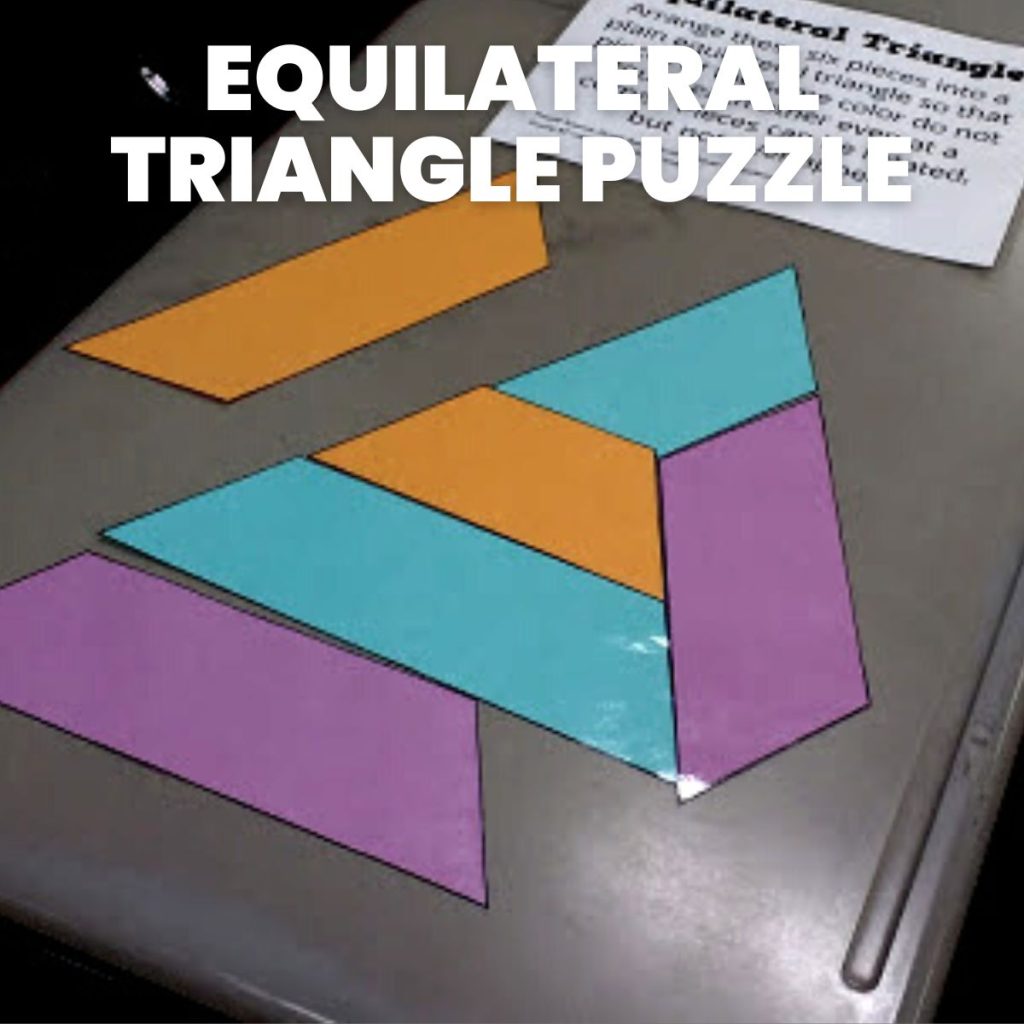
Looking for more printable geometry puzzles for your classroom? Here’s just a few examples of other geometry puzzles I have shared!
Puzzle Instructions
You are given six quadrilaterals. These are printed on three different colors of paper. You must arrange the six pieces to form a plain equilateral triangle.
Pieces of the same color are not allowed to touch each other, not even at a corner. Pieces can be rotated but not overlapped.
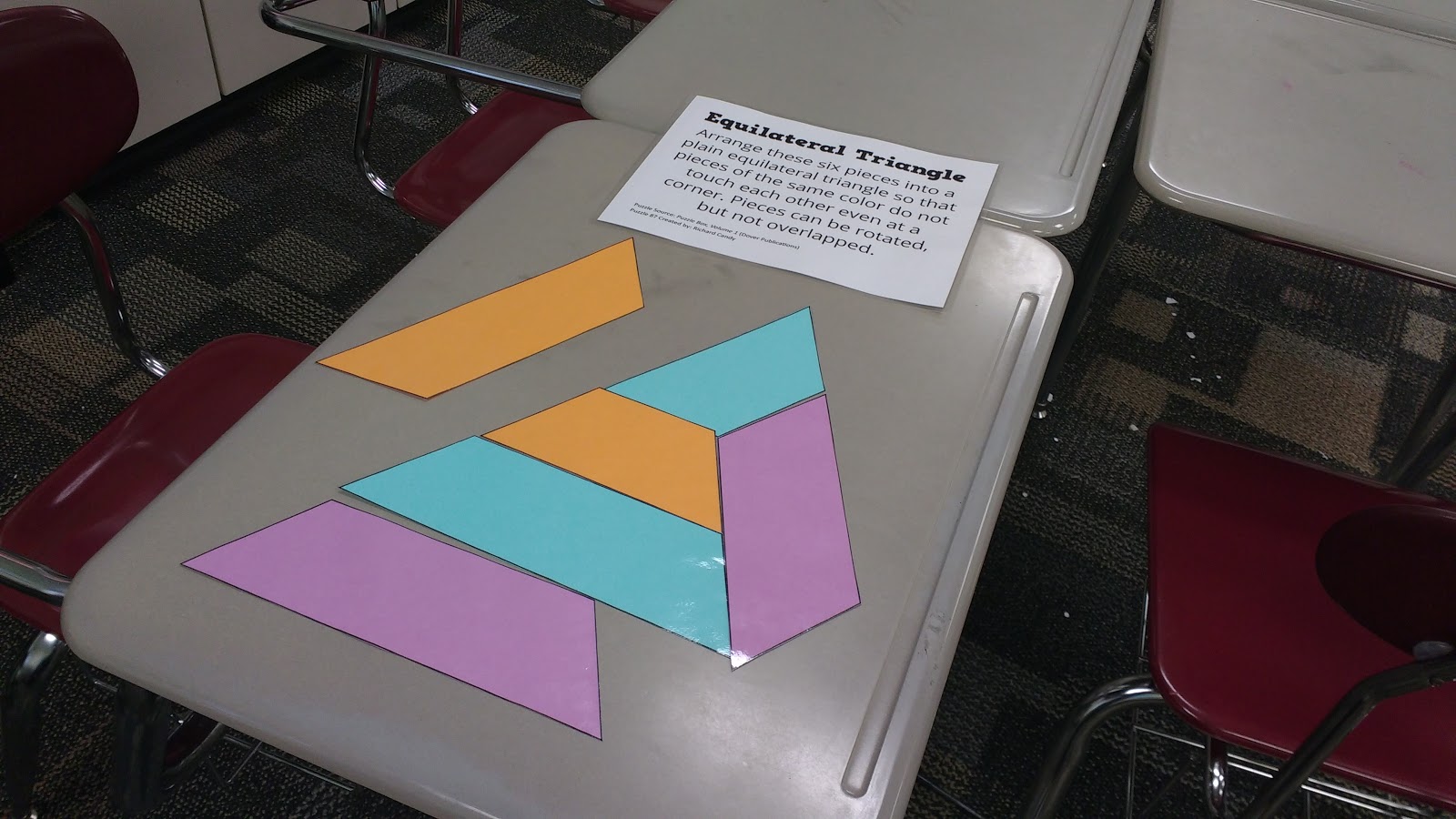
Puzzle Source
This equilateral triangle puzzle comes from Puzzle Box, Volume 1 from Dover Publications. This is the first book in a series of three puzzle books that are edited by the Peter and Serhiy Grabarchuk.
This specific puzzle is by Richard Candy.
Each volume has 300 puzzles, and I have found over a hundred puzzles between the three volumes that I would like to adapt to use in my classroom some day. If you love puzzles or if you are looking for resources to teach your students to reason logically, Puzzle Box, Volumes 1-3 are the books for you!
My Experience Solving this Puzzle
This school year has been CRAZY. Crazy busy. Crazy exhausting. Crazy good. Crazy, crazy, crazy. The other day, I was feeling a bit overwhelmed with the amount of stuff I had to get done. But, at the same time, I just needed to take a bit of a break.
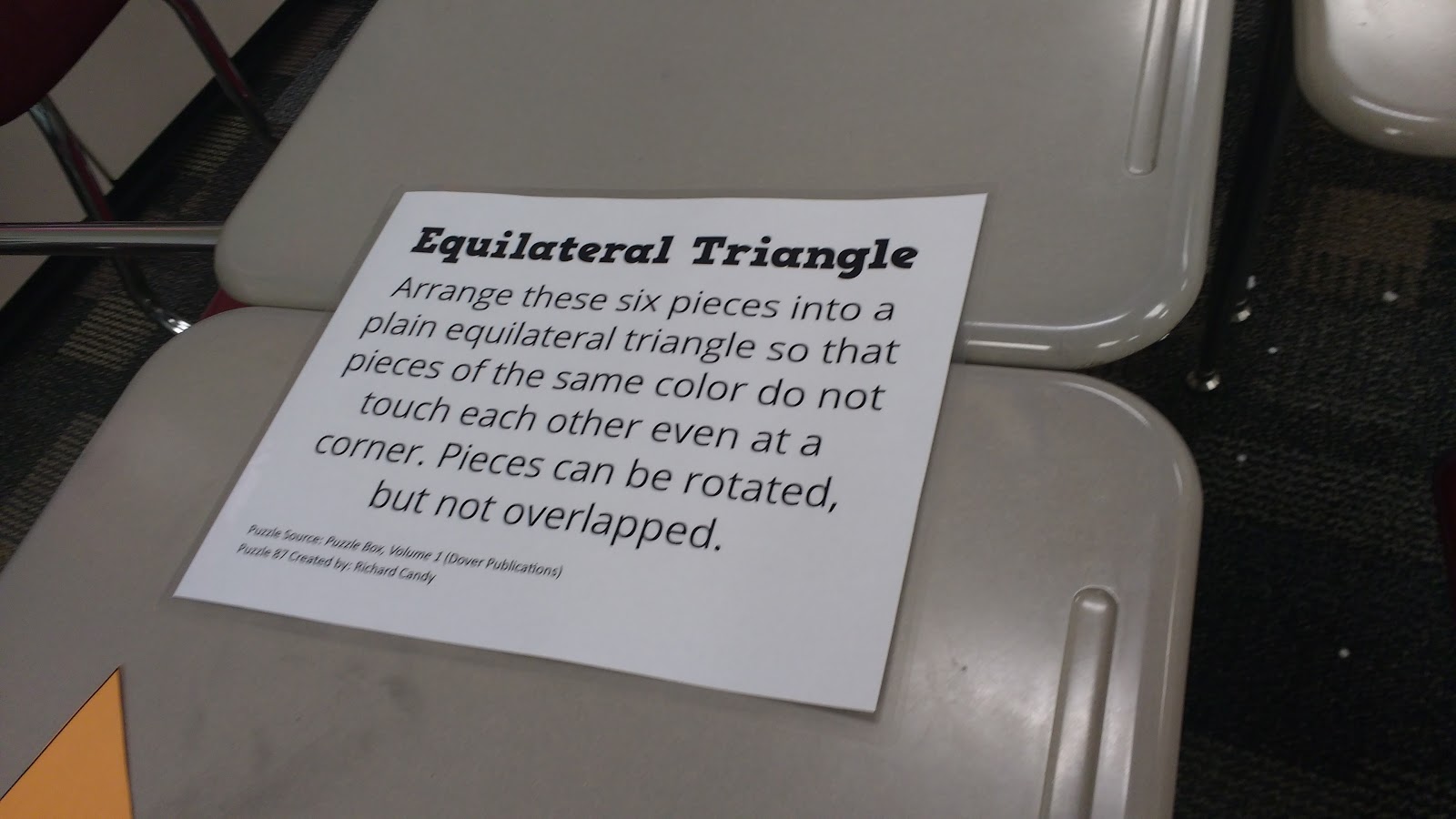
My students leave at 3:05, but our contract time doesn’t end until 3:30. So, one day with 25 minutes to fill, I decided to tackle one of the puzzles I had typed up this summer for my puzzle table, the equilateral triangle puzzle.
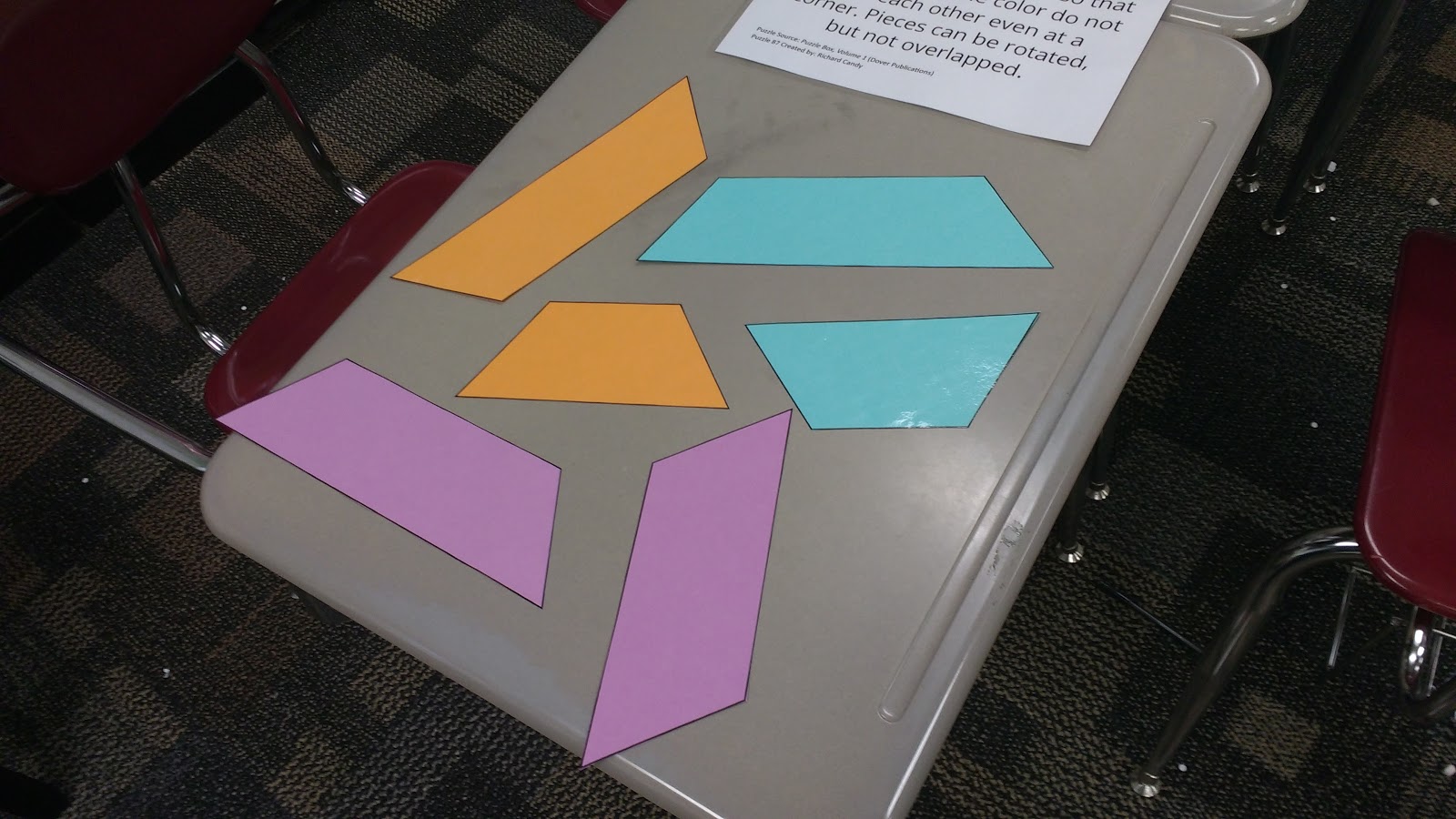
As I started trying to solve the equilateral triangle puzzle, I went through several thought processes.
How in the world is this going to make an equilateral triangle?
Hmmm…let me try this.
Nope. This is impossible. There is no way these pieces could make a triangle.
Maybe I made a mistake when I created the pieces in Microsoft Publisher.
Wait…what if I try this?
Oooh…I’m so close. Maybe this is possible.
What happens if I move this here and another piece there and… I got it!
This was fun!
Now, I can’t wait to try this with my students!
Using this Puzzle in the Classroom
My students are currently working through a collection of puzzles on their “Puzzle Passports,” so I will have to wait a bit to put this out. Or, maybe I should add magnets to the pieces and stick it up on the dry erase board to see what students do with it…
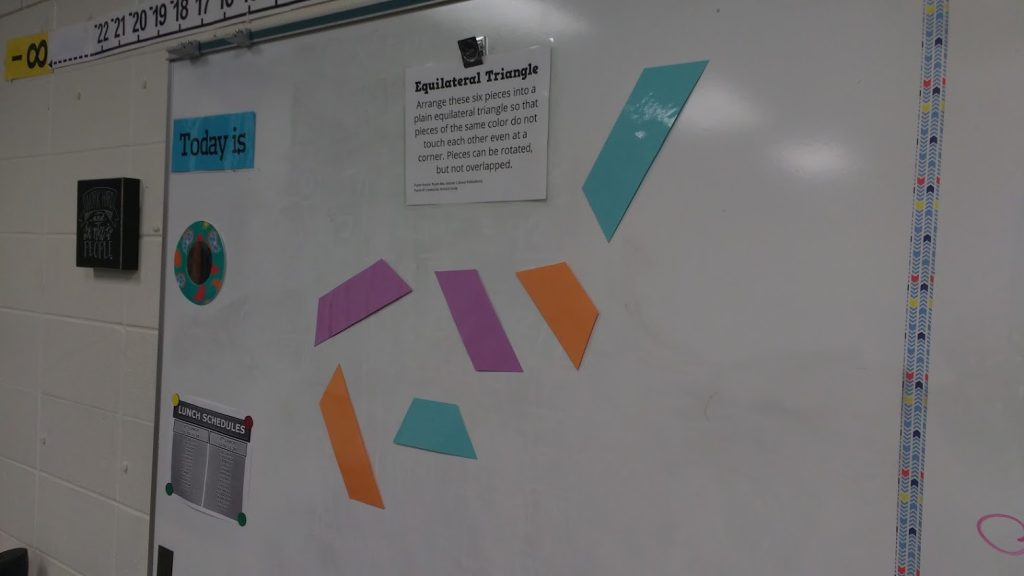
Update: I did add disc magnets to the back of each puzzle piece. They worked perfectly!
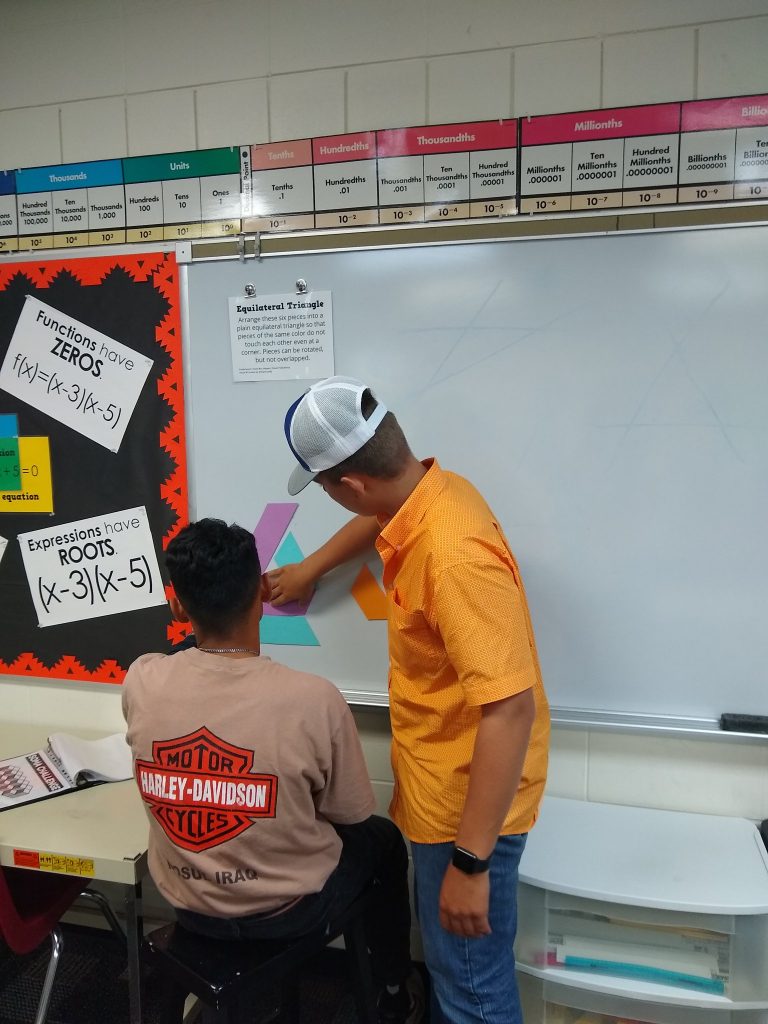
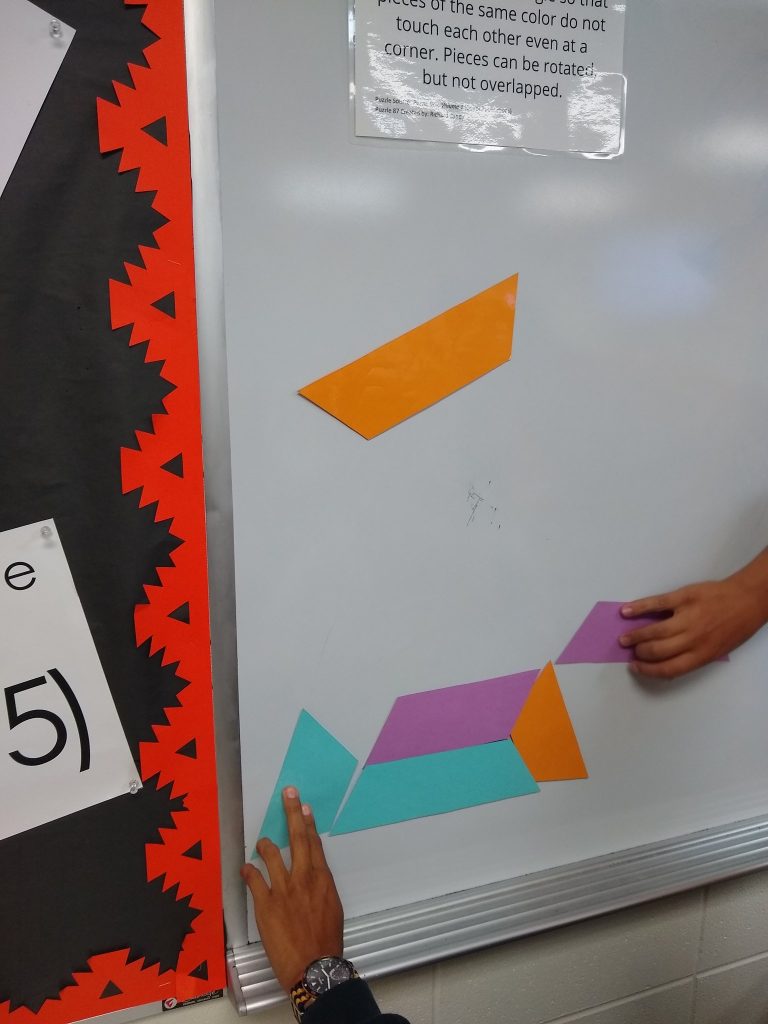
Also, Duane Habecker shares several ideas for scaffolding this puzzle with students and creating multiple levels of success!
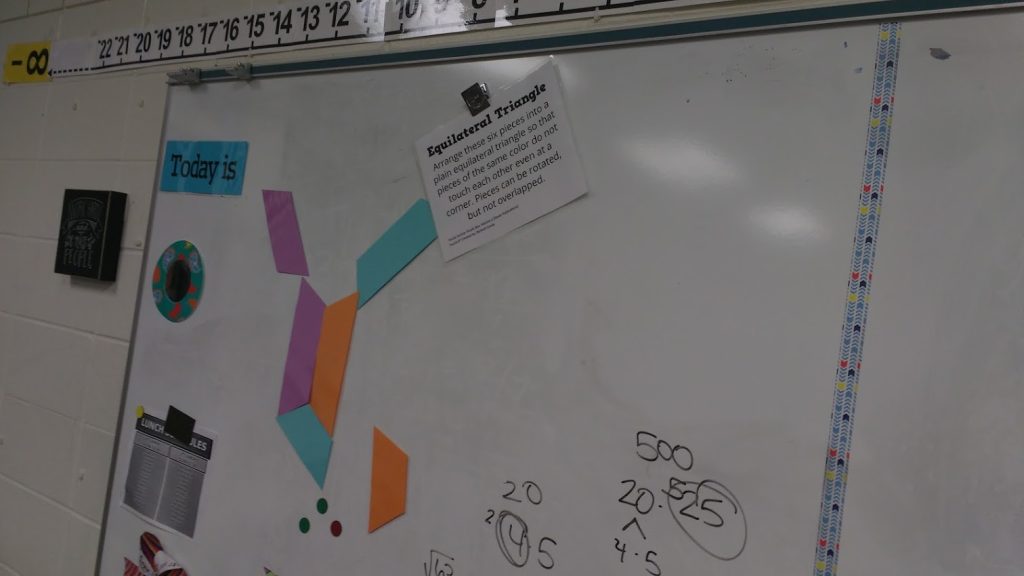
Files for Equilateral Triangle Puzzle
Click here to SAVE the file to your device.
Equilateral Triangle Puzzle (PDF)
5882 saves – 187.97 KB
Want more puzzles for your classroom? I suggest checking out my dedicated puzzle page.
Puzzle Solutions
Puzzle solutions are available on a password-protected solution page. I do not openly post the puzzle answer keys because one of my goals as a resource creator is to craft learning experiences for students that are non-google-able. I want teachers to be able to use these puzzles in their classrooms without the solutions being found easily on the Internet.
Please email me at sarah@mathequalslove.net for the password to the answer key database featuring all of my printable puzzles and math worksheets. I frequently have students emailing me for the answer key, so please specify in your email what school you teach at and what subjects you teach. If you do not provide these details, I will not be able to send you the password.
Not a teacher? Go ahead and send me an email as well. Just let me know what you are using the puzzles for. I am continually in awe of how many people are using these puzzles with scouting groups, with senior adults battling dementia, or as fun activities in their workplace. Just give me enough details so I know you are not a student looking for answers to the puzzle that was assigned as their homework!

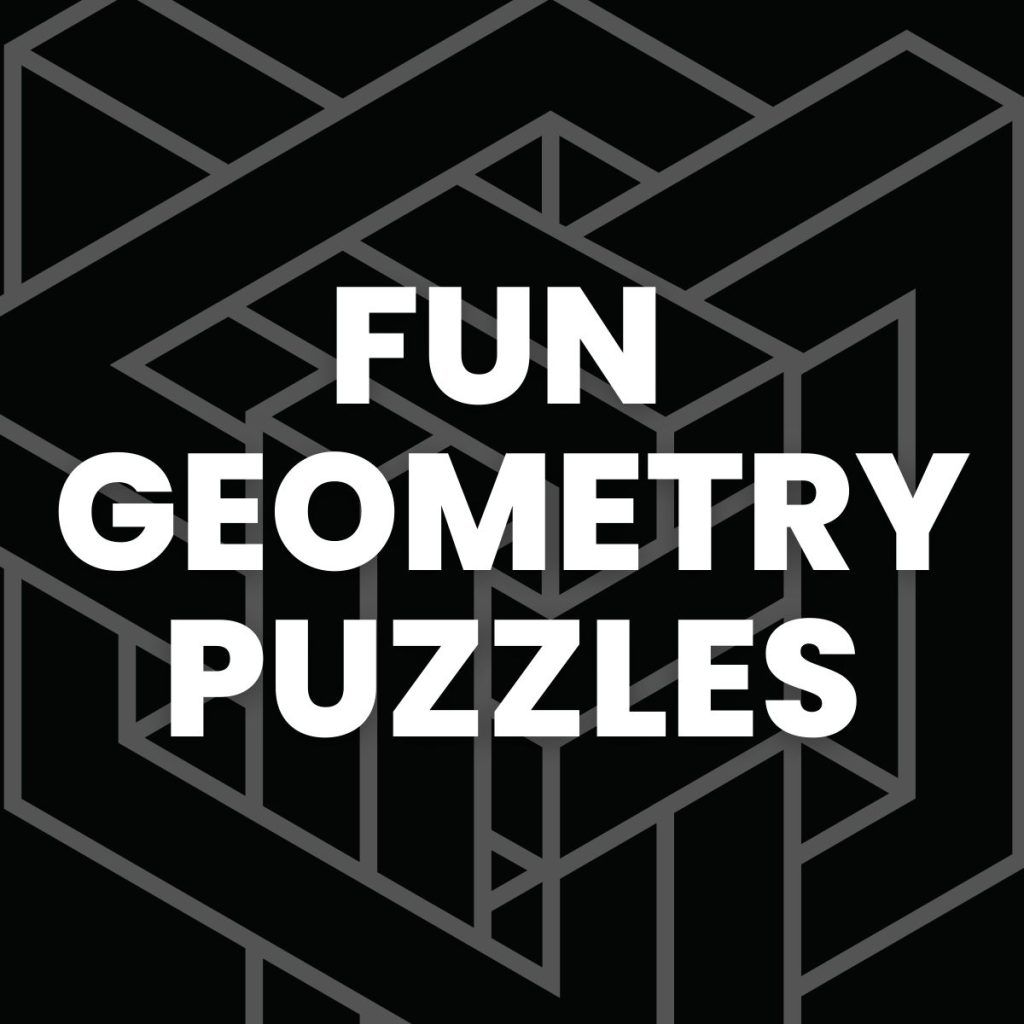

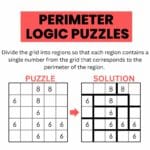

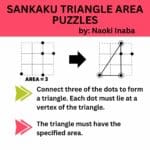


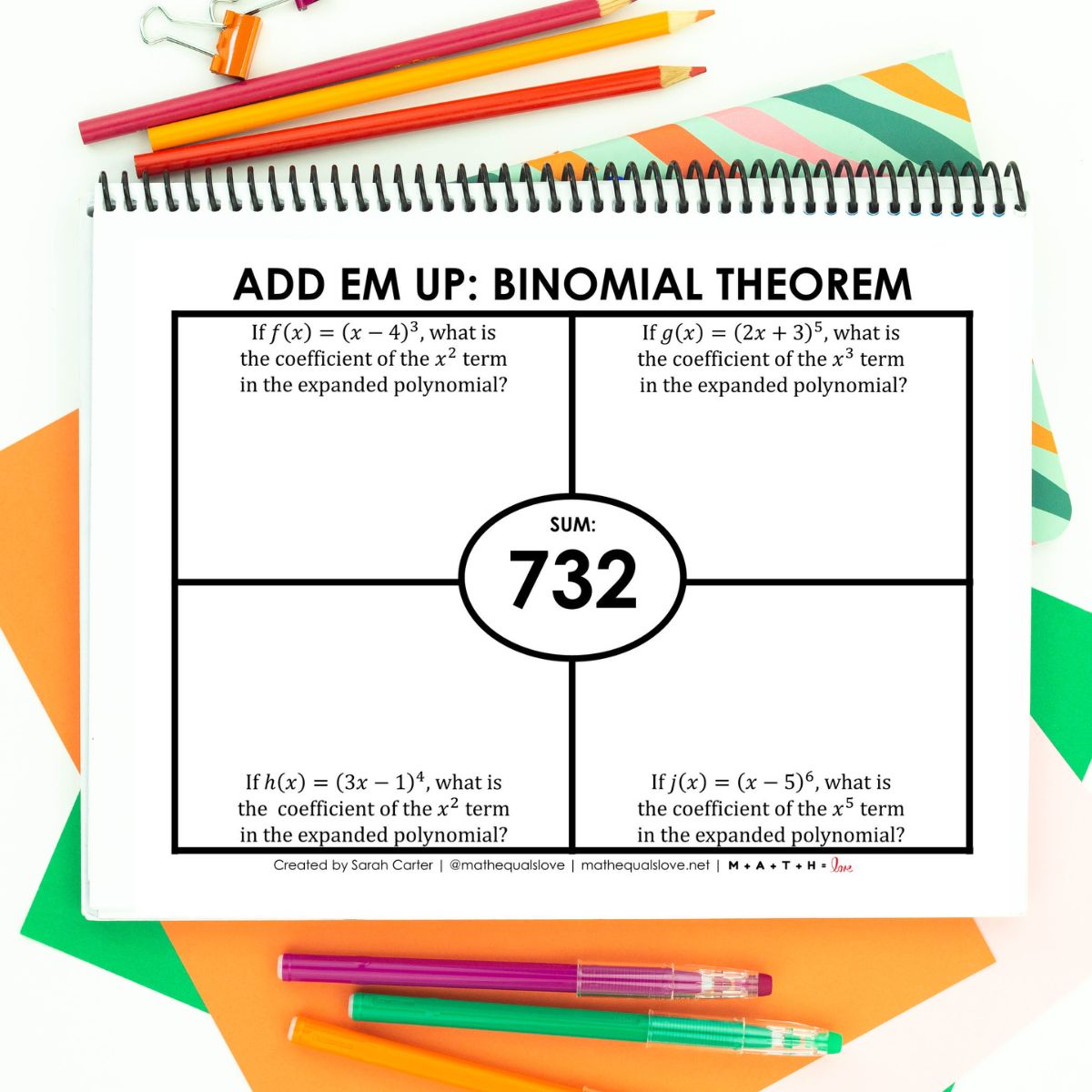
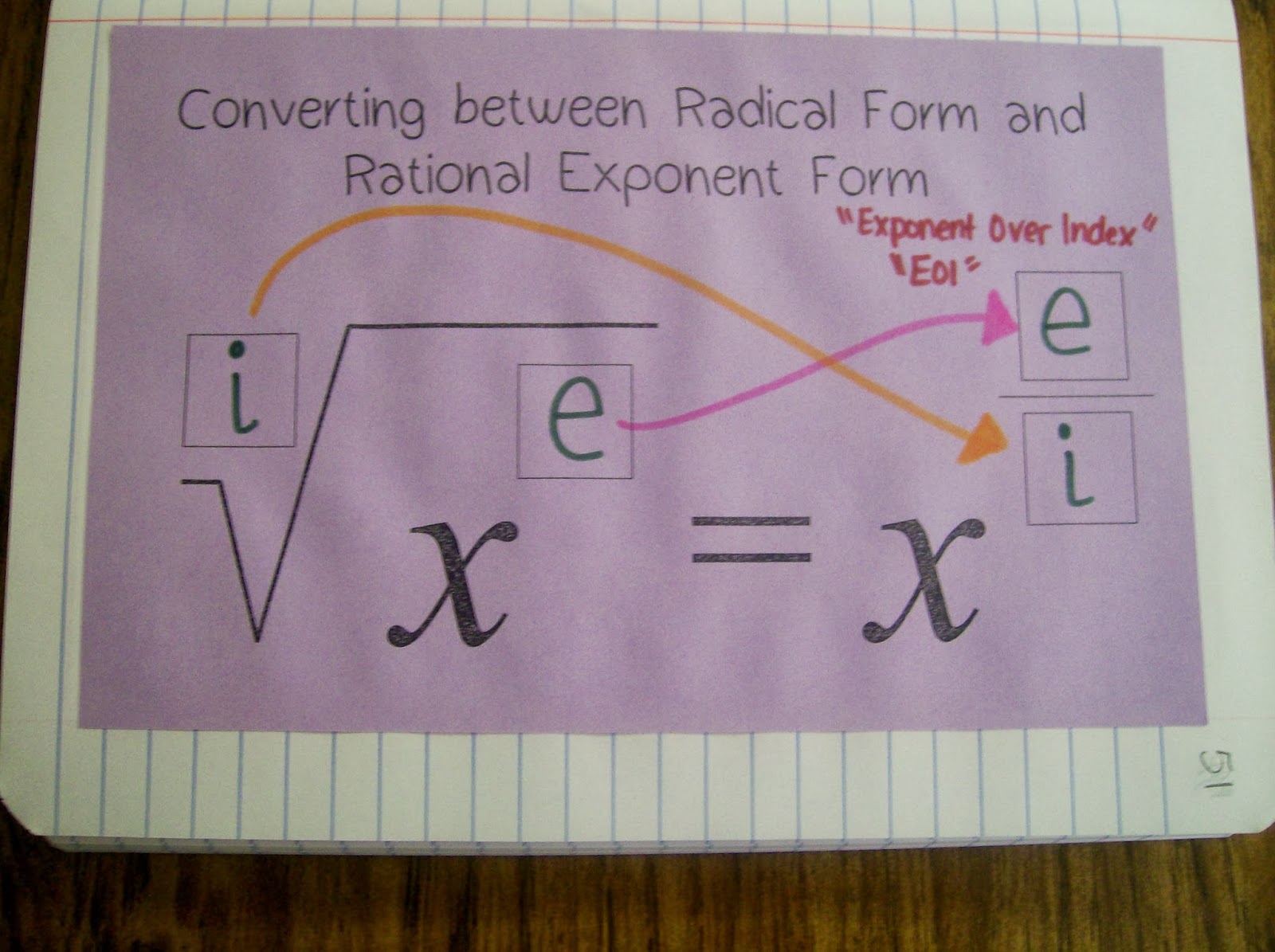

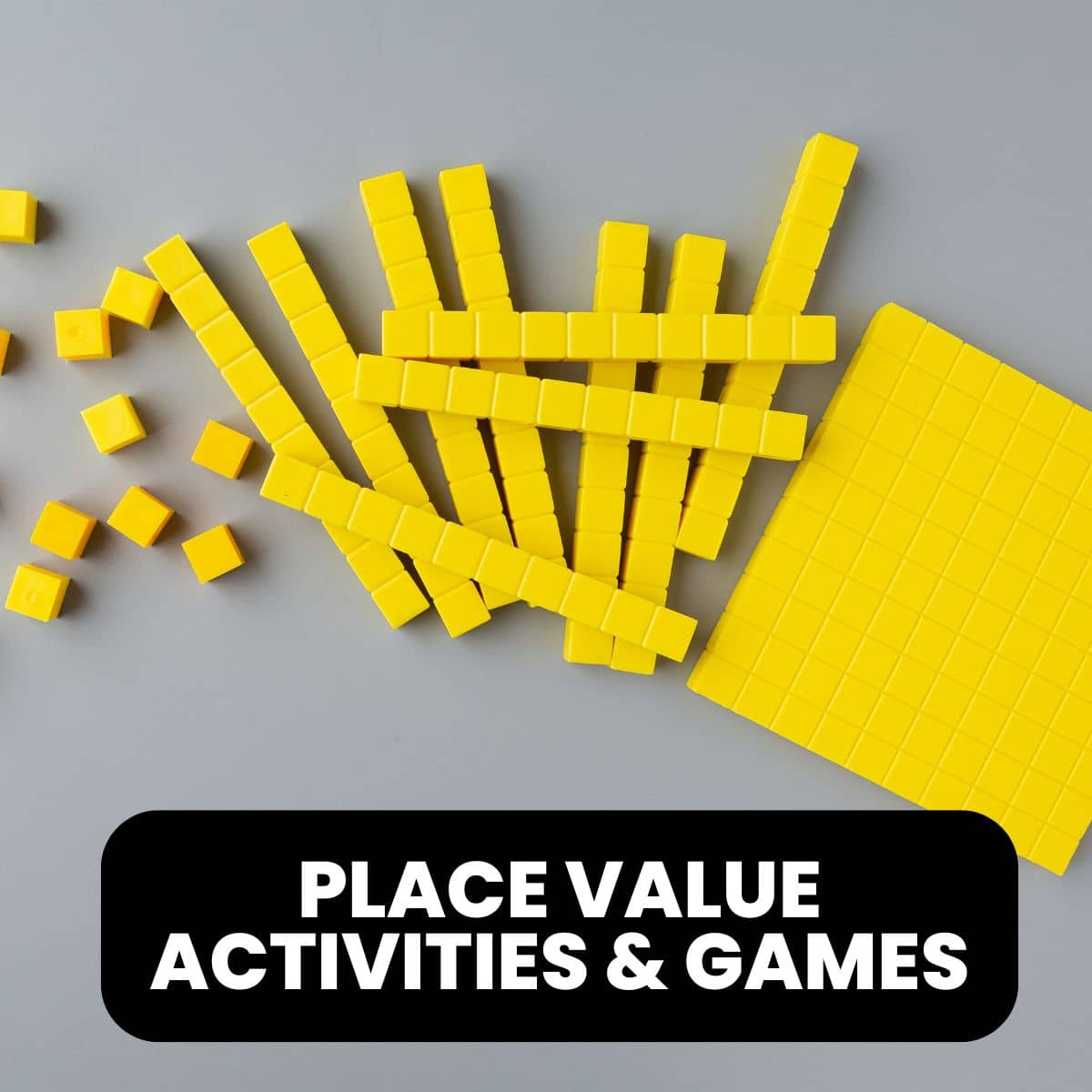


Great puzzle, thanks for the file, I'm going to try it with my kids! I always kept a bin of puzzle books for my high school math/science students to use when they had a spare few minutes, they are a great way to encourage cognitive flexibility. I like the idea of using magnets to put the pieces on the white board, then students can work together on the puzzle when coming in and out of the classroom. Or, even put the pieces on a table outside the classroom during conference time and let parents try it themselves to get a sense of what their students are able to accomplish!
I love this product recommendation! As smart as Amazon's suggestion algorithms are I always end up discovering great products from other people's feedback and suggestions. Just hope my kid will like this 😉
Thanks for sharing and the screenshots Sarah!
Thanks 🙂
https://bajdocja.blogspot.com/2018/09/uoz-trojkat-z-czworokatow.html
Great puzzle, thanks for the file, I'm going to try it with my kids! I always kept a bin of puzzle books for my high school math/science students to use when they had a spare few minutes, they are a great way to encourage cognitive flexibility. I like the idea of using magnets to put the pieces on the white board, then students can work together on the puzzle when coming in and out of the classroom. Or, even put the pieces on a table outside the classroom during conference time and let parents try it themselves to get a sense of what their students are able to accomplish!
my sister loves puzzles so much. she is 7 years old and she can make 1000-2000 pieces puzzles. even i cant do that. but i want to buy her different, interesting puzzles. where can i find them?
You still there?
Seriously- worried about you.
Is everything ok???